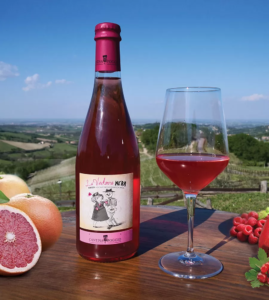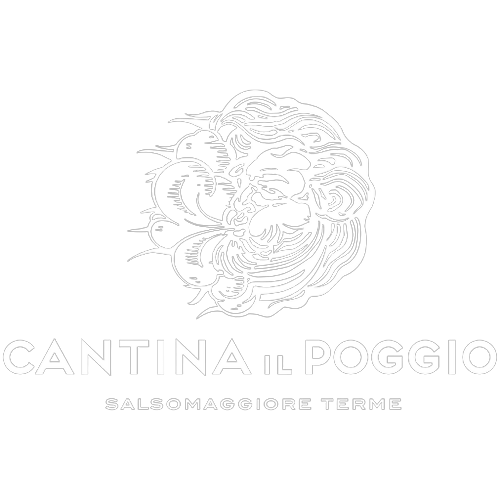Wine and Eggplant – The Italian way
Wine and Eggplant – The Italian Way
You are preparing a delicious Parmigiana, and you still have a few bottles from Cantina Il Poggio hidden away, safely stored in your wine cellar, just waiting to be opened.
Which will be the best one to pair with your dish?
Originating from India and dating back more than 4,000 years, eggplant is one of the vegetables that starts its season in summer and accompanies us until mid-September. 
In this article, I recommend you three wines from Cantina Il Poggio to pair with three dishes that feature eggplant as the main ingredient. 🍆
But first, as always, let’s get started with a bit of knowledge from the past.
A glimpse into the past
It is curious how a vegetable that was heavily mistreated during the Middle Age is now the foundation of the Italian gastronomy, such as Parmigiana, Pasta alla Norma, or Caponata.
Eggplant arrived in Europe due to the Arab conquest of Spain. At that time, its name was al badinjian (= the egg of the devil), and thus it certainly didn’t enjoy a good reputation.
Following disgraceful episodes, such as hysteria, epilepsy, and the plague, Spanish people began to suspect that the Arabs had introduced eggplant to decimate Christians.
During Middle Age, in Italy, the prefix “melo” was added to indicate vegetables that came from far away: thus, it was named melanzana from the Latin “mela” and “insana” (= unhealthy fruit). In french, aubergine (from Catalan, albergínia) and, interestingly, eggplant in english, perhaps due to the lighter and oval-shaped varieties.
Production in Italy
Several statistics state that Italy is the largest European producer of eggplants, with 327,487 tons harvested in 2019. Spain is its most aggressive competitor, especially in terms of price: in 2018, 24,523 eggplants were imported in Italy and 90% of it came from Spain.
On the other hand, when it comes to exports, we are around 5,000 tons, which vary from year to year, sometimes decreasing. Perhaps there should be greater valorization and promotion of the product.
The Many Beneficial Properties of Eggplant
Eggplant is composed by 92% water and contains beta-carotene and minerals such as potassium, magnesium, and calcium, as well as phosphorus, zinc, iron, copper, manganese, selenium, and sodium. It also contains folic acid, vitamins A, B1, B2, B3, B5, B6, C, E, K, and 24 calories per 100 grams of product.
It has a draining and purifying action on the liver, reduces the risk of developing osteoporosis, and improves gastrointestinal issues. Thanks to its antioxidants, it counteracts free radicals, by providing benefits to the circulatory system.
It’s important to remember that eggplant contains solanine, a toxic substance for humans, so it should always be consumed cooked to avoid feeling unwell.
Parmigiana and Il Poggio – A Timeless Classic
 Il Poggio is a irreverent wine, strong yet refined and elegant, round but incredibly powerful; tannic, but without being too insistent. Thanks to that 1% of Bonarda left to dry until the last warmth of October on the hills of Cangelasio, the nose is completely wrapped in aromas reminiscent of a overripe plum, black cherry and sour cherry.
Il Poggio is a irreverent wine, strong yet refined and elegant, round but incredibly powerful; tannic, but without being too insistent. Thanks to that 1% of Bonarda left to dry until the last warmth of October on the hills of Cangelasio, the nose is completely wrapped in aromas reminiscent of a overripe plum, black cherry and sour cherry.
No one dares to rush it, so it rests and improves for long time. In a year, it moves between barrels and tonneaux of different sizes and toasting levels, intentionally absorbing all the typical aromas of French oak, such as vanilla, leather, tobacco, chocolate, and licorice. After all, what is the purpose of wood if not to give notes that bring complexity, pleasure, and mystery to a product that, with its higher percentage of Cabernet Sauvignon, already demonstrates its greatness.
I recommend it with Parmigiana di Melanzane, which, despite being a vegetarian dish, is extremely rich, smooth, and velvety, achieving glory alongside a wine of equal magnificence.
Pasta alla Norma and Falstaff – A Gamble
We bottled the Falstaff 2022 in April 2023, opened it right away, and it turned out to be a pleasant discovery. In its simplicity and freshness, we loved it from the first moments, slightly preferring it chilled.
It’s that classic, easy-drinking wine that goes hand in hand with cheese that tastes of hay, countryside, and wildflowers on a freshly started spring day.
Falstaff (from the opera by Giuseppe Verdi, Falstaff) is a lying, proud, and captivating gentleman, just like our 100% Barbera with no sulphites added.
Pasta alla Norma, made with simple and fresh ingredients, such as two basil leaves, pairs perfectly with our Falstaff 2022, thanks to the winning ingredient: slightly smoked, grated salted ricotta, sprinkled on the plate, which concludes with its rustic notes on a grand finale.
 Babaganoush and Vedova Nera – The black eggplant Caviar
Babaganoush and Vedova Nera – The black eggplant Caviar
The Vedova Nera, along with the Vedovona, is the quintessential summer wine. The bottle to uncork under sun at the beach, with an ice bucket and two glasses.
Back home from the shore, the warm sun and salty breeze have tired us out, the air has turned mild, the sky turns to orange nuances, and maybe you don’t want to spend so much time in the kitchen. Maybe. So, you still have two glasses of Vedova Nera left, what do you do?
Take an eggplant, cut it in half, carve it, guarnish it with your favorite and colorful spices, and bake it in the oven at 200°C (392°F) for half an hour. While you’re waiting for the Babaganoush to finish cooking, there is a glass of Vedova Nera waiting for you, still fresh, still with its beautiful pronounced acidity, typical of Barbera, and its fine and persistent fruity notes, typical of Merlot.
Let us know if you’ll try at least one of these pairings, and if, by chance, your wine cellar at home is missing one of these bottles, well, no problem: we’re here! 😎🍾




Post a Comment